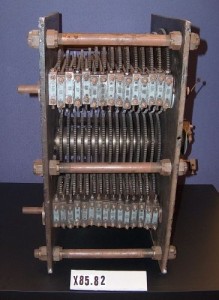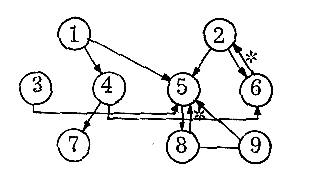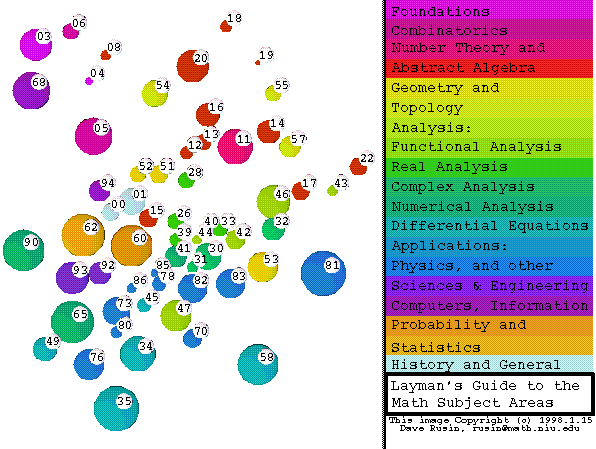Hello. My name’s Christian Perfect and I have some maths links for you.
Brad Neely, a member in good standing of my list of male role-models, once made a show called China, IL. Here’s a clip.
http://www.youtube.com/watch?v=r086uma9HBM
Mathematicians like to tell non-mathematicians (and themselves) that real maths isn’t like that; real maths is about seeing the structure behind the numbers and using pure logic to deduce true statements with enormous explanatory power. The platonic ideal of doing real maths involves going for a wander in your brain and then writing down a few of the true statements you saw along the way. But it almost never works out that way: you often have to start out by sitting down and crunching numbers, like any school-age chump, until you get a glimpse of what’s going on. Worse, sometimes it turns out that finishing the theory involves a reduction to cases, a.k.a. Yet More Crunching.
So, this one goes out to the number crunchers. Let these stories of quixotic computation give you solace.
This slashdot thread is ostensibly about crowdsourcing the solution to FreeCell, but the comments are just as interesting. In 1994, over 100 curious souls joined forces on Usenet to test the creator’s claim that every hand of FreeCell generated by the game is winnable. A comment says that someone wrote a computer-proof program specifically for FreeCell and showed that only the one hand found by the Usenet collaborators is unwinnable. It seems to be written in C and is in fact just a search algorithm in the space of FreeCell games. The author of that program then popped up to say that searching the entire game tree for the unwinnable hand takes 0.7 seconds on a 3GHz computer. Science progresses!
So number crunching has moved on from getting hordes of numerate people to sit and — to quote the constipated mathematician — work it out with a pencil, to writing a program to give to a computer. One of the first projects to make the paradigmatic shift and surrender the ancient practice of cold, unthinking calculation to cold, unthinking calculators is the Cunningham project, which started in 1925, jumping to ENIAC “during a holiday weekend” in 1949, and is trying “to factor numbers of the form $b^n \pm 1$ for $b = 2,3,5,6,7,10,11,12$ and large $n$”. I don’t know why. It looks like an excuse to practise writing algorithms for supercomputers. There is some historical context in this essay from a book whose title is “High Primes and Misdemeanours” (which I think is an excellent title by the way).
 Both the FreeCell solvers and the Cunningham project follow Marx’s maxim and distribute their calculations among many computers to lighten the load on the individual. Red-blooded American Frank Nelson Cole spent “three years of Sundays” factorising a number. That (possibly apocryphal) story comes from Eric Temple Bell, whose account of Cole’s announcement of his achievement describes a scene uncannily similar to the one in China, IL:
Both the FreeCell solvers and the Cunningham project follow Marx’s maxim and distribute their calculations among many computers to lighten the load on the individual. Red-blooded American Frank Nelson Cole spent “three years of Sundays” factorising a number. That (possibly apocryphal) story comes from Eric Temple Bell, whose account of Cole’s announcement of his achievement describes a scene uncannily similar to the one in China, IL:
At the October, 1903, meeting in New York of the American Mathematical Society, Cole had a paper on the program with the modest title On the factorization of large numbers. When the chairman called on him for his paper, Cole—who was always a man of few words—walked to the board and, saying nothing, proceeded to chalk up the arithmetic for raising 2 to the sixty-seventh power. Then he carefully subtracted 1. Without a word, he moved over to a clear space on the board and multiplied out, by longhand,
\[ 193,707,721 \times 761,838,257,287 \]
The two calculations agreed. … For the first and only time in record, an audience of the American Mathematical Society vigorously applauded the author of a paper delivered before it. Cole took his seat without having uttered a word. Nobody asked him a question.
 People often use the analogy of a sieve when talking about algorithms for finding primes. Dick Lehmer could produce primes as fast as you could shake a sieve at him, because he built a literal sieve in 1926 to do just that. His contraption consisted of a collection of gears and holes, along with a photosensitive detector to catch the primes that fall out. Lehmer wrote a rather jolly paper about his machine, titled Hunting Big Game in the Theory of Numbers. What would he say if we could show him Alkulukuja Paskova Karhu!
People often use the analogy of a sieve when talking about algorithms for finding primes. Dick Lehmer could produce primes as fast as you could shake a sieve at him, because he built a literal sieve in 1926 to do just that. His contraption consisted of a collection of gears and holes, along with a photosensitive detector to catch the primes that fall out. Lehmer wrote a rather jolly paper about his machine, titled Hunting Big Game in the Theory of Numbers. What would he say if we could show him Alkulukuja Paskova Karhu!
Lehmer took great joy in describing the whir of parts as his sieve did its work, so let’s have a little diversion to look at another mechanical computer. Vannevar Bush’s differential analyzer was a lichen made of gears and rods and photoelectric sensors, consuming what looks like a whole floor of a building as space for its computations.
I found both Lehmer’s sieve and the passage about Cole in a very long article at The Rutherford Journal about the history of factorisation. I won’t pretend I’ve read it all – consider it another worthy ongoing intellectual project.
Finally, the most astonishing thing about all this is the fact that Slashdot’s community has atrophied sufficiently that only the neckbeards are left, so all the comments I read on that FreeCell post were relevant and really interesting. What brave new world we live in.
Oh, you were expecting a defence of the benefit of doing these enormous computations? Here, have all the prime numbers anyone’s known about ever. Once you’ve looked at them all and can definitively say there’s nothing of interest in there, I still won’t care enough to have the argument with you.
Here ends my Ode to Effort. Talking of odes, David Pleacher has a charming collection of mathematical poems and songs. This poem on the subject of 0! gives a taste:
Man has pondered
Since time immemorial
Why 1 is the value
Of zero-factorial.
Suppose I tell you in a few minutes that that poem was composed by Isaac Newton in an idle moment. “Liar!” you’ll be able to say, because you’ll have seen in Earliest Known Uses of Some of the Words of Mathematics that factorial was coined in the late 1700s by Louis François Antoine Arbogast. It’s good to know these things; I like to make rash claims.
“The History of Mathematics in Clerihew” is a title to make you sit up and listen. Unfortunately, apart from a reference in The Math Forum’s library, no trace remains on the web. Un-unfortunately, the Wayback Machine exists. The reality is a bit disappointing – ten poems of varying quality, the cleverest of which makes a point of not rhyming, and the worst of which doesn’t rhyme accidentally. Oh well!
 It looks like I’ve got a poetry theme going now. Maths is itself a kind of constrained writing, so it shouldn’t be surprising that so much poetry on mathematical subjects exists. “Foundations of Arithmetic” by J.A. Lindon is one example. Martin Gardner called Lindon “the greatest living writer in English of humorous verse”, and he and Lindon co-wrote a paper about the act of rearranging the words in poems, called Pied Poetry. The blog Let ε < 0. has loads more mathematical poetry. I like this Ode to Z.
It looks like I’ve got a poetry theme going now. Maths is itself a kind of constrained writing, so it shouldn’t be surprising that so much poetry on mathematical subjects exists. “Foundations of Arithmetic” by J.A. Lindon is one example. Martin Gardner called Lindon “the greatest living writer in English of humorous verse”, and he and Lindon co-wrote a paper about the act of rearranging the words in poems, called Pied Poetry. The blog Let ε < 0. has loads more mathematical poetry. I like this Ode to Z.
The conduct of e
Is abhorrent to me.
He is (not to enlarge on his disgrace)
More than a little base.
-A Clerihew by J. A. Lindon
Since I mentioned Martin Gardner, here’s the guide to the Martin Gardner Papers held at Stanford University. It’s just a list of all the physical stuff held in Stanford’s archives, but it’s absolutely enormous, and googling any entry will usually get you the information you want.
The Mathematisches Forschungsinstitut Oberwolfach is a pleasant set of buildings situated in the Black Forest that attracts mathematicians from all over the world to conduct workshops and seminars and do all the things mathematicians do to each other when in close proximity. The MFO has over the years assembled a pretty large collection of photos of mathematicians in this most natural environment, and they’ve put it all online for us! You can fill your boots with photos of mathematicians in classic poses near blackboards, as well as endless groovy pictures of mathematicians in times past rocking whatever was unfashionable at the time.
Shabby men will talk about maths whenever an opportunity presents itself, and YouTube is a never-ending opportunity. While there are many wild-eyed loons on YouTube extolling their theories of sacred geometry or esoteric numbers, this happy chap ploughs an altogether different furrow.
One problem with these posts I keep writing is that everything I link to can and will eventually disappear. Some things have already gone, like those clerihews I mentioned earlier, but others you’d expect to have passed away long ago are still with us. A considerable number of people seem to have realised early on that the web could be a digital museum of maths facts. Project MATHEMATICS! still claims to offer VHS tapes exploring topics in high school mathematics, while Mathematical Atlas has a gloriously information-dense and navigability-impeding dithered interface on top of a quite useful collection of references and links. And of course, it’s all inside a frameset.
If the web is a museum of maths, vismath wants to be the gift shop. They sell posters, postcards, puzzles, printed polyhedra and plenty more. No keyrings, though.
Imagine the look on my face when I read Periodiocally Aperiodical – Aperiodically Periodical, the title of a piece of chamber music by Patricio da Silva. Now imagine that look changing, the smile sliding down my face, as I listened to the performed work. Oh well, the hunt for a theme tune for this site continues.
Out of context, this page of figures for “Truchet curves and surfaces” is pleasing. In context, it’s educational. What a marvel! This page on ovals and egg curves by Jürgen Köller needs no context. EggMath, presented in glorious Chickscope 1.5, covers a few more oval topics.
The natural consequence of an egg is a baby, which represents a considerable commitment of time and effort. Some fret over this fact, but Allen Knutson demonstrates how he finds it easy to juggle his work and family responsibilities:
http://youtube.com/?v=x8WBhLZDrhM&t=4m10s
HYPERSEEING looks like a fun magazine, but what’s the most bizarre thing you’ve seen done with TeX?
Now, off to sleep until the next Aperiodical. Let the integer sequences carry you away to the fantasy land where lemmas grow on trees and theorems fall out of thin air.
